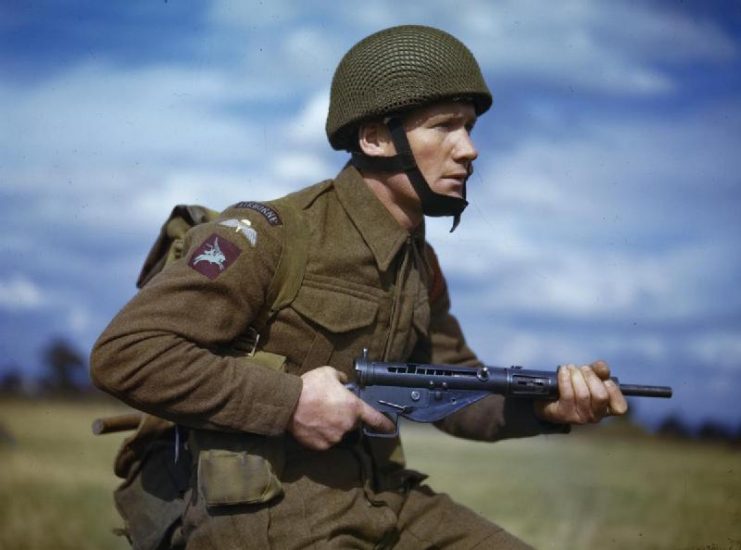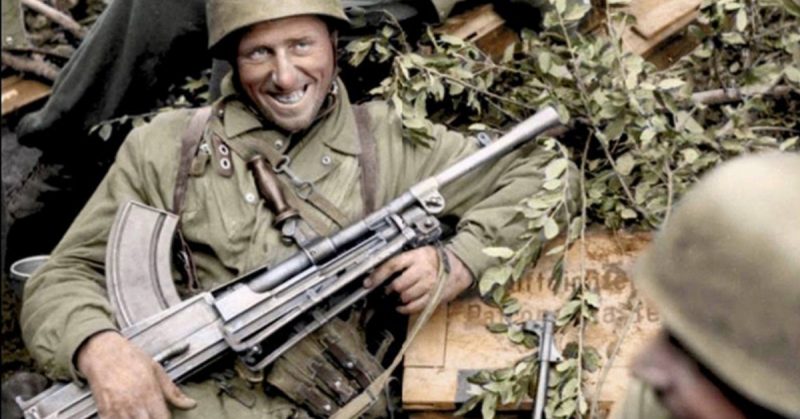During World War II, the US produced more than 1.5 million Thompson submachine guns.
The Second World War was the largest, most destructive and bloodiest war in the history of humanity. The losses and destruction caused by this war are so great that they are difficult to calculate, and can only be roughly estimated.
In many ways it was a war of technology and weapons. Millions of ordinary men relied on their weapons in battles, carrying them in European cities, the deserts of Africa, the humid jungles of Burma and the South Pacific, and other places.
In this article, we will look at 10 of the best infantry rifles and machine guns of the Second World War.
M1 Garand
The M1 Garand rifle was the first rifle adopted as the main weapon of the US infantry. General George S. Patton called it “the greatest battle implement ever devised.”
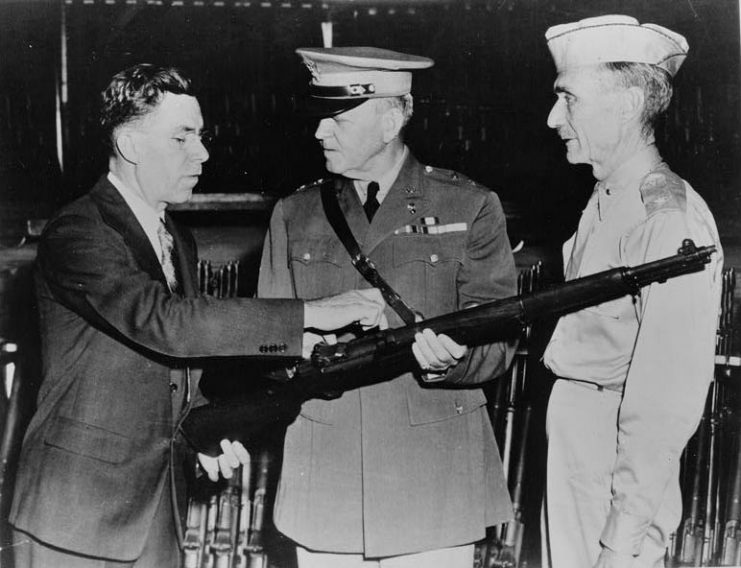
Due to its reliability and accuracy, the Garand was issued to US forces in both WWII and the Korean War. Its rate of fire decreased the effectiveness of the Japanese strategy of banzai attacks.
Some rifles were equipped with a bayonet and a M43 rifle grenade launcher. Currently, the Garand is popular in the civilian weapons market.
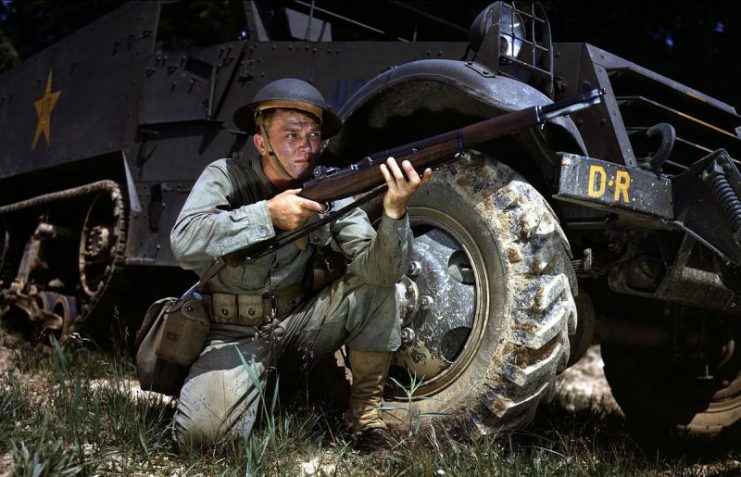
PPSh-41
This Soviet submachine gun, developed in 1940 by designer Georgy Shpagin, was one of the main submachine guns of the Red Army in World War II. The PPSh had a high rate of fire and was most effective at close range, such as in urban fighting conditions.
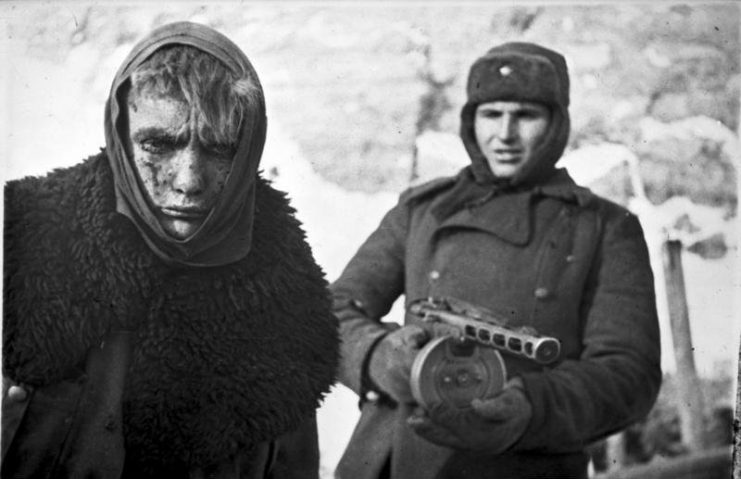
The PPSh was simple to manufacture, reliable, and easy to use. At the height of the war, Soviet plants produced up to 3,000 such weapons per day. The Soviet command armed entire regiments and divisions with the PPSh.
The PPSh’s drum magazine containing 71 rounds and high rate of fire of up to 1,000 rounds per minute gave the Soviets a firing advantage at close range. German soldiers throughout the war used captured PPSh submachine guns, which is evidence of its popularity.
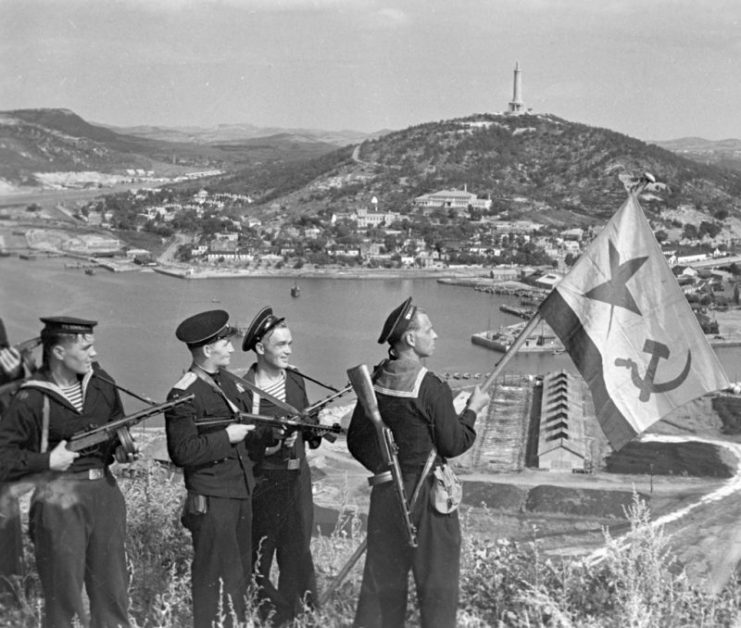
Thompson submachine gun
Designed in the United States in 1918, the Thompson became one of the most recognizable submachine guns in history. It was widely used by both criminals and the police in the US, as well as by military paratroopers, intelligence officers and Special Forces. Its high rate of fire of up to 900 rounds per minute gave its firer a melee advantage.
During World War II, the US produced more than 1.5 million Thompson submachine guns.
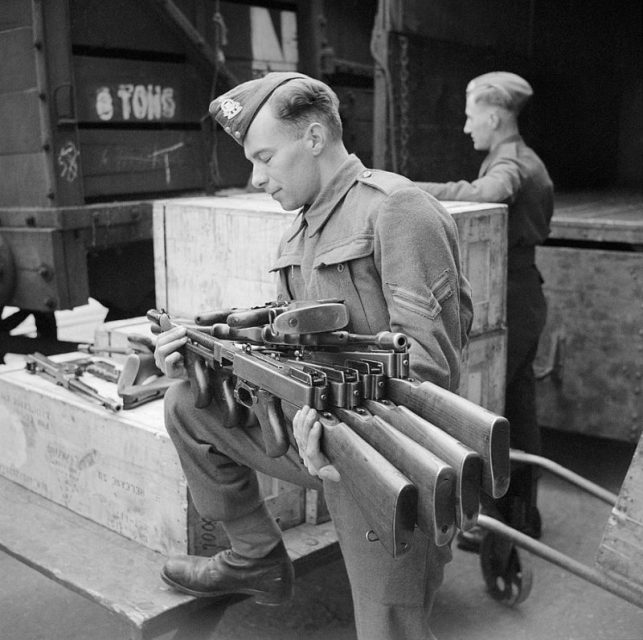
In 1942 the US Army adopted the M1A1, which was a cheaper and simplified version of the previous model M1928.
The Thompson was usually equipped with a box magazine that held 20 or 30 rounds, or a drum magazine with 50 or 100 rounds of .45 caliber ammunition.
About 135,000 Thompson submachine guns were supplied to the USSR during the Lend-Lease program. In addition to their use as infantry weapons, they were also mounted on military equipment.
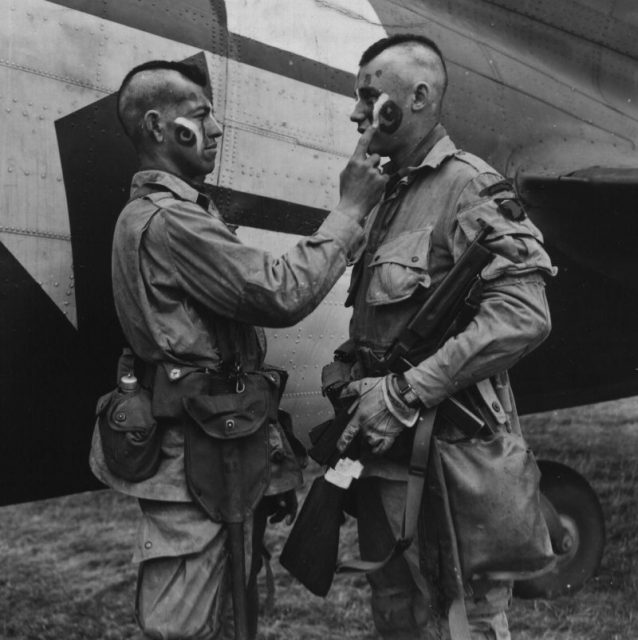
Lee-Enfield Rifle
The British Lee-Enfield No. 4 MK I, which entered service in 1941, became the standard rifle of Great Britain and the Commonwealth in the Second World War. Thanks to a ladder aperture sight calibrated for 200-1,300 yards, the British infantry had an amazing range and accuracy of shooting. In World War II, the rifle was modified several times and was supplied with various sights for sniper shooting.
During its entire span of production time, more than 17 million Lee-Enfield rifles with various modifications were manufactured. During the Afghan war, the destruction of a Soviet Mi-8 helicopter by a shot from this rifle was recorded.
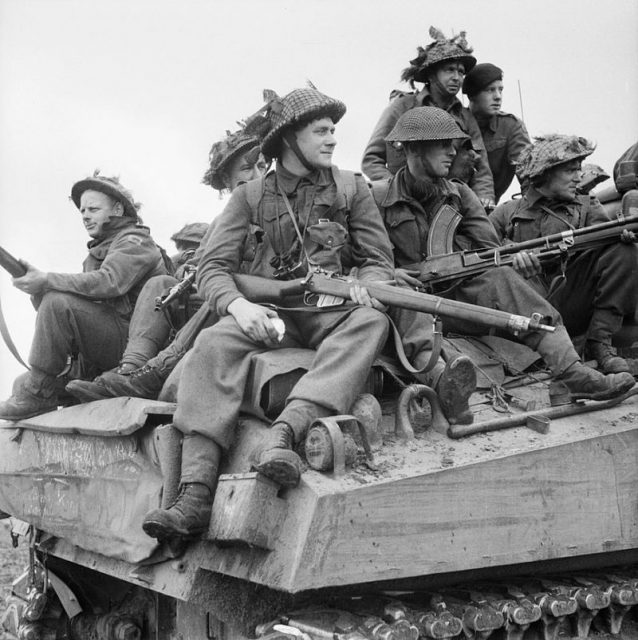
Bren light machine gun
The light Bren machine gun showed good performance, whether in the harsh winters of Norway or the hot regions of the Persian Gulf. The Bren gun was a British modification of the Czechoslovak ZB-26 machine gun, and in August 1938 it became their main light machine gun.
Designed to fire .303 caliber cartridges, the Bren used a 30-cartridge magazine or a 100-cartridge magazine for anti-aircraft guns. However, due to the stiff spring in the box magazine, only 28 rounds were often charged. Bren guns could fire 500-520 shots per minute and had an effective firing range of 600 yards (550 m).
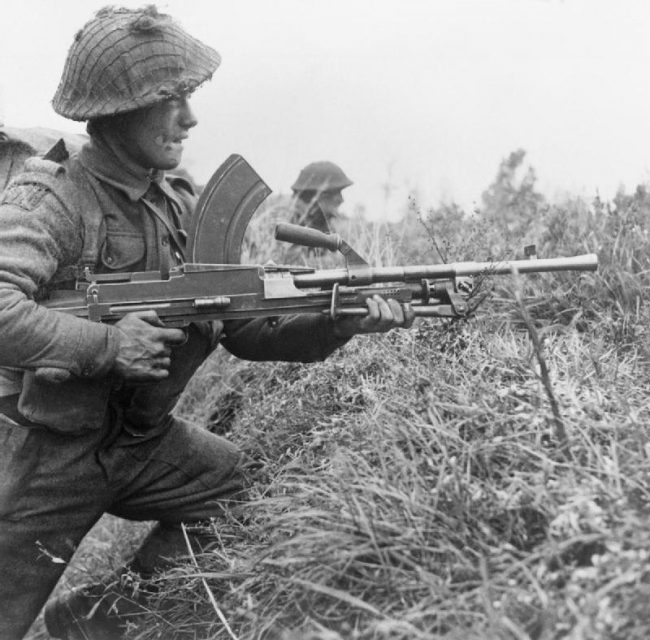
MG 34
The Maschinengewehr 34 or MG 34 is a 7.92-mm German machine gun and one of the most reliable and effective machine guns of WWII. It had an excellent rate of fire that could reach 900 rounds per minute, and thanks to a light weight of just over 26 pounds, one person could carry it. The Wehrmacht adopted the MG 34 in 1934, and until 1942 it was the main machine gun for infantry and tank forces in Germany.
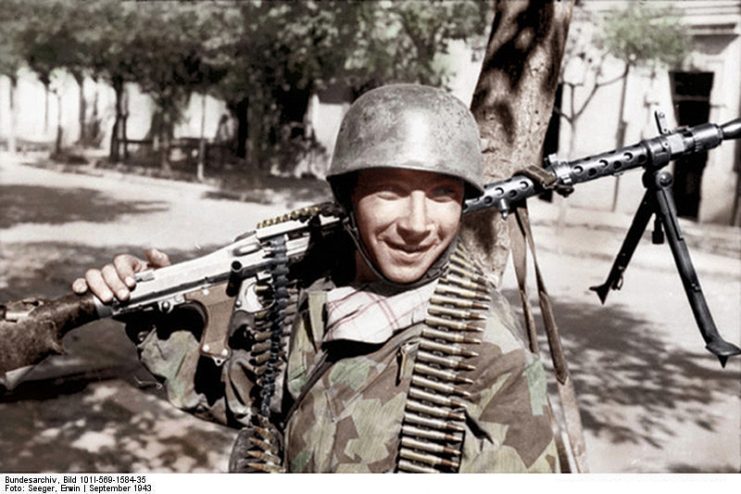
The MG 34 was equipped with a double trigger, allowing both automatic and semi-automatic fire, as well a 75-round “double drum” magazine. Despite the fact that in 1942 the Wehrmacht adopted a more advanced MG 42 machine gun, the use of the MG 34 did not stop until the end of the war.
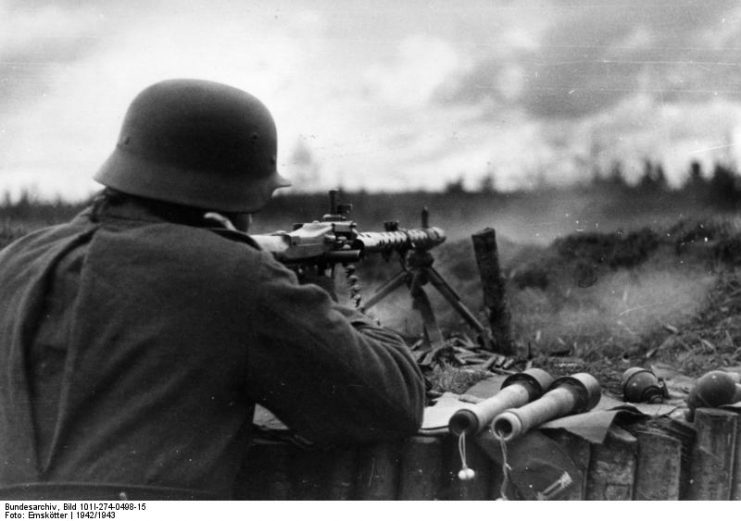
StG 44
The StG was different from other submachine guns, such as the Soviet PPSh, in that it had a much longer range of aimed shooting. This was achieved with an intermediate cartridge which, unlike pistol cartridges, had better ballistics and more power than those used in other submachine guns. In addition, it was possible to install grenade launchers, telescopic sights, and other accessories on the StG.
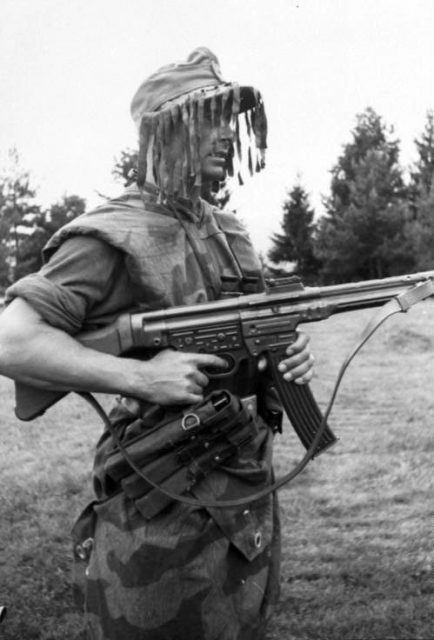
The rate of fire was up to 600 rounds per minute. These selective-fire rifles made a significant contribution to weapon designs, but they did not play a crucial role in deterring the Allies.
The Wehrmacht made more than 420,000 units of the StG 44, which were used in the post-war period by the police of the GDR, and the army and the police of the Federal Republic of Germany, Switzerland, France, Czechoslovakia, and the Airborne Forces of Yugoslavia.
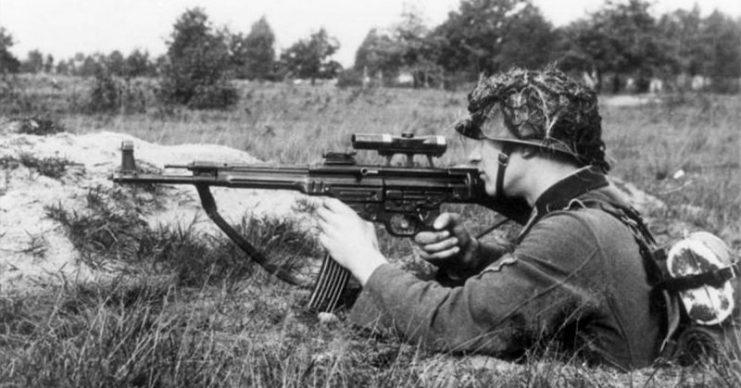
PPS-43 Sudayev submachinegun
The submachine gun developed by the Soviet designer Sudayev in 1942 in some cases is considered the best submachine gun of the Second World War. The main feature of the PPS-43 is its simplicity of design and easy manufacturability.
The weapons were assembled from stamped parts that were joined using rivets and welding. The consumption of materials for the production of a PPS-43 was half that of the manufacture of a PPSh-41.
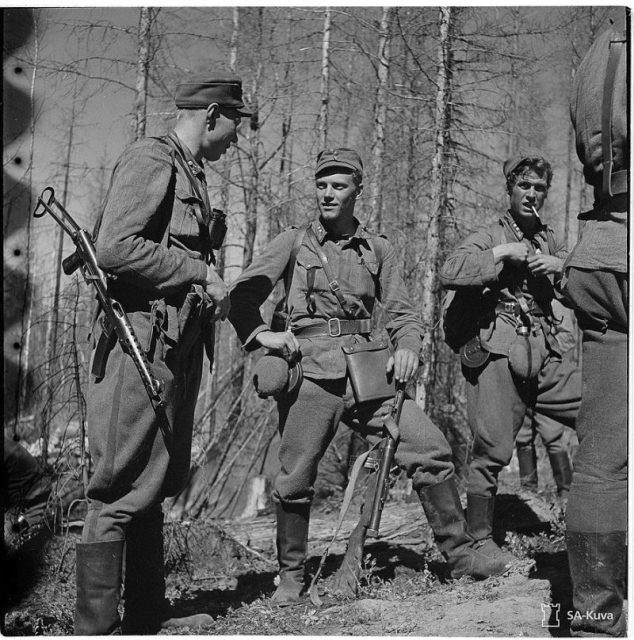
MP40
This machine gun was intended primarily for tankers, motorized infantry, paratroopers, and infantry squad commanders. However, towards the end of the war, it began to be used by the German infantry quite massively, although it did not have widespread distribution. Even so, the German MP40 became a symbol of the German soldier in World War II.
This weapon was particularly effective in the battles on the Eastern Front, which forced the German command to reconsider its views on semi-automatic weapons and led to the creation of the first assault rifle.
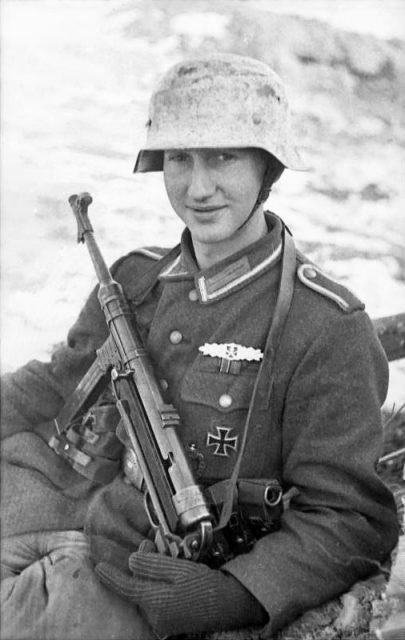
STEN or Sten gun
The British Sten Gun was one of the most common submachineguns in service with the British Army until the early 1960s. Having lost a large number of weapons during the evacuation of Dunkirk in WWII, Great Britain needed simple, cheap and technological weapons that could be mass-produced at non-specialized wartime enterprises.
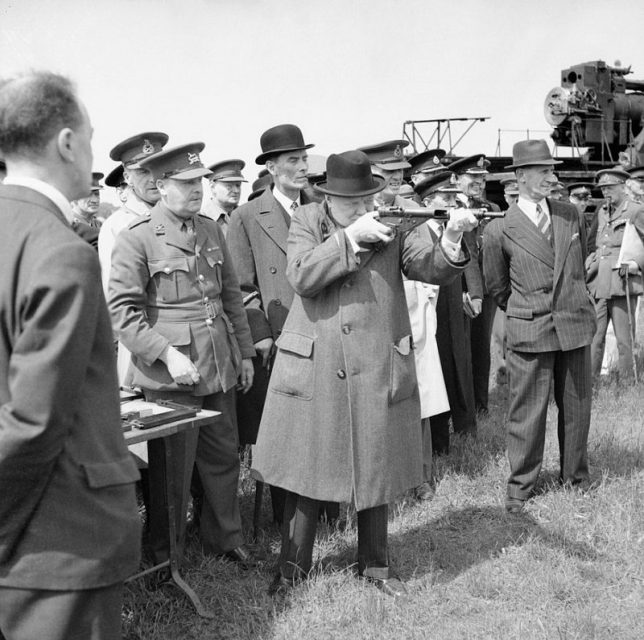
The Sten was essentially a simplified version of the German MP28, and was mass-produced by factories throughout England. Between 1941 and 1953, about 3.8 million copies of Stens were made with various modifications, and over 34 million magazines were made for them.
Read another story from us: Best Infantry Weapons of WW2
The combination of low cost and high adaptability, along with acceptable combat qualities such as a high rate of fire, made the Sten one of Great Britain’s main infantry weapons in World War II.
Since the war, the production of unlicensed copies of this gun has occurred worldwide, making it one of the most common types of weapons in its class.
